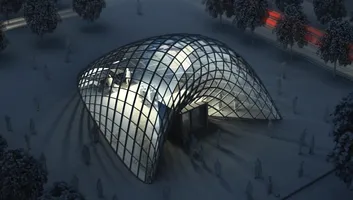Discretization in Geometry and Dynamics SFB Transregio 109
The Collaborative Research Center (SFB TRR) 109 researches the discretization of geometric structures and dynamic processes. That means, that they dismantle smooth geometric objects, such as curved surfaces, into simple basic elements, or reduce continual processes, such as the flight paths of satellites, into their partial steps.
Collaborative project: Discretization in Geometry and Dynamics (DGD)
This transregional research project is financed by the German Research Foundation (DFG) and is headed by the TU Berlin with the TUM as the partner university. Leading scientists from the FU Berlin, HU Berlin, Universtität Potsdam, TU Wien, IST Austria and KAUST, Saudia Arabia complete the group. In a total of 18 projects, 120 mathematicians and computer scientists work on questions concerning the discretization of geometric structures and dynamic processes, as well as in the area of computation.
Discretization enables the calculation and analysis on computers and is used in areas such as computer graphics, digital signal processing and numerical simulations.
Mathematical methods for future technologies

"Previous methods only allow approximate values, which are no longer sufficient for many tasks today," explains spokesman Alexander Bobenko, Professor of Geometry at the TU Berlin. "In order to achieve better results, we therefore want to find, investigate and apply so-called structure-preserving discretizations. One could also say that we no longer want to discretize individual equations, but rather the underlying theories."
Specifically, the researchers are investigating discretizations for which there are no structural differences in important aspects of corresponding smooth surfaces or continuous dynamic processes. One subproject, for example, deals with the decomposition of curved surfaces into flat squares. This allows the construction of a curved glass roof – with easy to manufacture construction elements. This makes it possible to realize a cost-effective and aesthetically pleasing architectural idea.
DFG grants third research period of the SFB TRR 109
The Collaborative Research Center Transregio 109 "Discretization in Geometry and Dynamics" successfully enters its third funding phase in 2020: For a further four years, until 2024, the DFG will again finance the project with a total of more than 7 million euros. In 2012, the TUM, together with the TU Berlin, received for the first time approximately 6 million euros from the DFG for the first four years of the mathematical research project. In 2016, the project was extended by four years with DFG funding of 7 million euros.
The area "computation" was significantly extended in the second research period, with a total of seven subprojects, aiming to keep abreast of current developments. The field of public relations also received more support, particularly in the areas of computer-aided media and film.
In the third research period, the scientists of the SFB/TRR aim to bring geometry, dynamics and computation even closer together. Structure-preserving discretizations remain the central theme, whilst computer scientists at TUM strengthen the area of application-oriented research. Exciting research topics are amongst others:
- Discrete conformal models in geometry and mathematical physics
- Rigidity of spin systems, discrete structures in fluids
- Structure-preserving discretizations of dynamic systems
- Geometric structures in architecture
The support and promotion of young researchers remains a central objective of the collaborative research center, with numerous research jobs for doctorate and postdoctorate students financed by the DFG within the projects.
Participating researchers from the TUM
At the TUM, five research units of the Department of Mathematics and two research units of the Department of Computer Science participate in the third funding period of the SFB TRR 109.